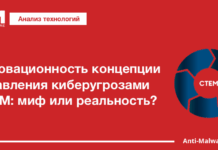A decision by the US Supreme Court in 1976 is relevant to practitioners for several reasons.
One of the questions before the court was what the word “material” meant[1].
In TSC Industries, Inc. v. Northway, Inc., 426 U.S. 438, they said that a fact is material if there is “a substantial likelihood that the …fact would have been viewed by the reasonable investor as having significantly altered the ‘total mix’ of information made available.” They also said that determinations of materiality require “delicate assessments of the inferences a ‘reasonable shareholder’ would draw from a given set of facts and the significance of those inferences to him ….”
Why is this relevant to risk assessment?
It doesn’t talk about an investor’s decisions being affected by a single fact in isolation.
Instead, it talks about the “total mix” of information.
The SEC refers to the same idea in its new cyber disclosure rule:
The Commission affirmed in the Proposing Release that the materiality standard registrants should apply in evaluating whether a Form 8-K would be triggered under proposed Item 1.05 would be consistent with that set out in the numerous cases addressing materiality in the securities laws, including TSC Industries, Inc. v. Northway, Inc., Basic, Inc. v. Levinson, and Matrixx…

































